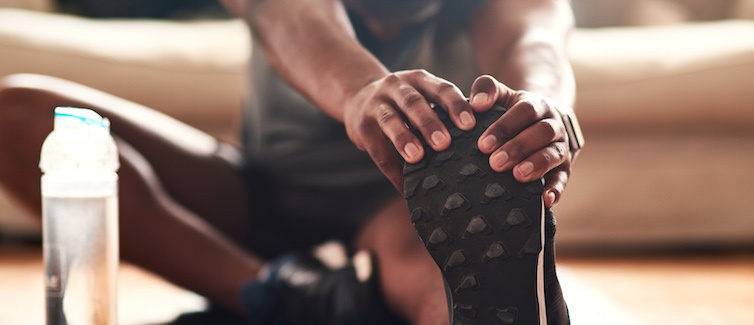During moderate to intense aerobic activity, such as running, swimming, bicycling, or brisk walking, your cardiovascular system is hard at work.
Your heart is beating faster so it can circulate more blood. To help with that process, your blood vessels expand. You’re also breathing harder so that your body gets oxygen everywhere it’s needed.
When your workout comes to an end, that doesn’t mean it’s time to stop. At the end of your workout, be sure to incorporate a few cooldown exercises. These could be as simple as a few minutes of light walking and some post-exercise stretches.
Never Miss a Beat!
Subscribe to Our HealthBeat Newsletter!
Thank you for subscribing!
You can now select the specific newsletters you'd like to receive.
You are already subscribed.
Subscribe to more newsletters in our email preference center.
Sorry, an error occurred. Please try again later.
Get Healthy Tips Sent to Your Phone!
The Low Down on Cool Downs
According to a 2018 review study in Sports Medicine, cooldowns are so important that 89% of college athletic trainers in the U.S. recommend an active recovery period for athletes. Trainers and athletes alike believe cooldowns have many benefits, including preventing injuries, reducing muscle soreness, helping increase range of motion, promoting better sleep, and improving immune response. Some trainers also believe an active recovery helps with athletic performance. The study also found that active recovery helps your cardiovascular and respiratory systems recover more quickly.
The Benefits of a Cooldown
Taking a few minutes to cool down is an opportunity to reflect on your workout and seal in a feeling of accomplishment.
Here are a few cooldown tips:
- If you’ve been running, slow to a jog or walk until your heart rate slows to about 120 beats per minute. If you don’t have a heart rate monitor, simply count your pulse for 10 seconds and multiply by six.
- Follow a similar process for cycling or swimming. Begin pedaling or swimming more slowly, and spend a few minutes moving at this more relaxed pace.
- As you cool down, recall a highlight of your workout (like making it to the top of a daunting hill).
Stretches to Add to Your Cooldown Routine
Because muscles are warm and more pliable after a workout, a cooldown can be a good time to do some light stretching. The National Heart, Lung, and Blood Institute recommends several cooldown stretches (hold each for 10 to 20 seconds).
- Runners: Try the calf wall-push. Standing a foot or so from a wall, lean forward and push against the wall. Keep your heels flat on the floor and feel the stretch in your calf muscles.
- Cyclists: Try the standing quadriceps stretch. Hold onto a chair, wall, or fence with your left hand, and bend your right knee behind you. Reach back and grab the top of your right foot with your right hand. Repeat on the left side.
- Swimmers and rowers: Try the overhead triceps stretch. Reach both arms up, and bend your right elbow. With your left arm, gently pull your right elbow behind your head. Repeat with your left elbow.
To make an appointment or learn more about UPMC Sports Medicine, please call 1-855-93-SPORT (77678) or visit UPMCSportsMedicine.com.
Sources
Warm Up, Cool Down, American Heart Association. Link
Do We Need a Cool-Down After Exercise? A Narrative Review of the Psychophysiological Effects and the Effects on Performance, Injuries and the Long-Term Adaptive Response, Sports Medicine. Link
Gina Kolata. Is the Exercise Cool-Down Really Necessary? The New York Times. Link
Your Guide to Physical Activity and Your Heart, National Heart, Lung, and Blood Institute. Link
About Sports Medicine
An athletic lifestyle carries the potential for injury. Whether you’re an elite athlete or a weekend warrior, UPMC Sports Medicine can help. If you are looking to prevent, treat, or rehabilitate a sports injury, our multidisciplinary team of experts can help you get back into the game. If you are seeking to improve your athletic performance, we can work with you to meet your goals. We serve athletes and active people of all ages and experience levels. Our goal is to help you keep doing what you love. Visit our website to find a specialist near you.
